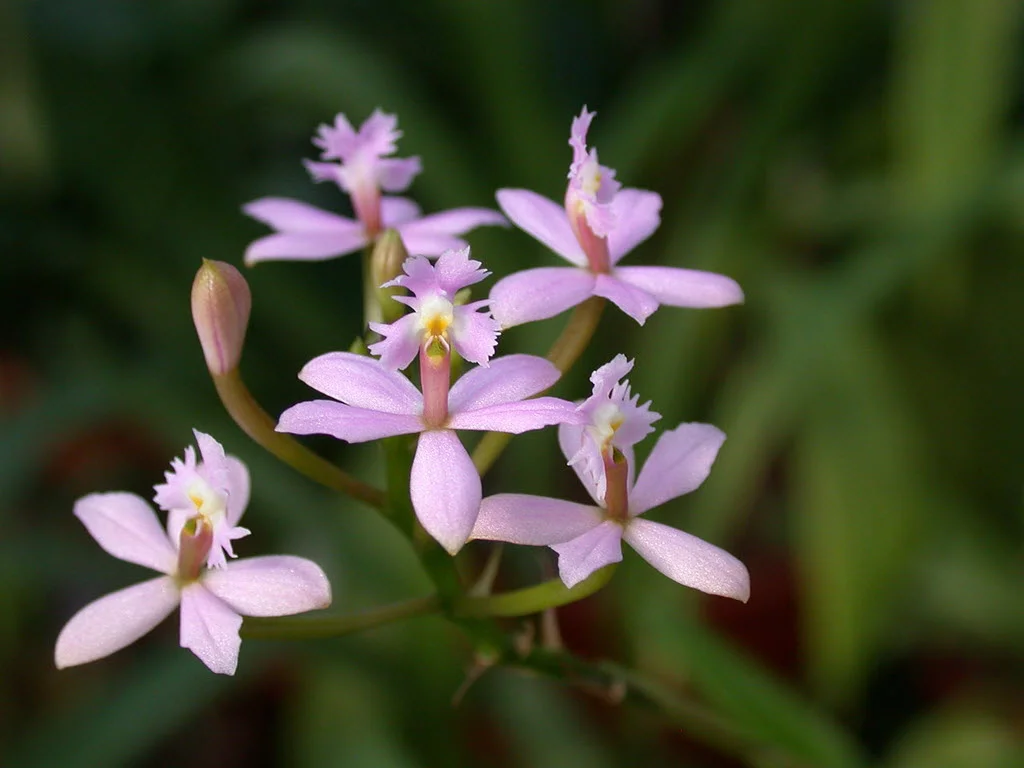Table of Contents
Pronunciation: stan-HOPE-ea
Introduction
Stanhopeas are unique because their flower stems grow downward through their potting medium and come through the bottom of their baskets to form hanging flowers. They also may drape down over the sides of their pots in order to bloom hanging.
Stanhopea Martiana
The orchid's flowers are very complex and fragrant, but they typically only last a few days per growing cycle. The foliage is dark green with deep grooves in the leaves. They are native to Trinidad, Mexico, Central America, and South America.
Temperature
These plants like warm to intermediate temperatures, with slightly cooler nighttime temperatures. During the daytime hours, you ideally want a temperature range that falls between 65°F and 70°F (18°C to 21°C). At night, they like cooler temperatures that range from 50°F to 55°F (10°C to 13°C).
They tolerate warmer or cooler temperatures to a slight degree, but they won't tolerate frost without damage.
Light
In order for your Stanhopeas to grow well, they like to have very bright but indirect sunlight. If you live in the northern hemisphere, try placing them in a bright south-facing window or in an east-facing window. This will allow them to get the bright morning temperatures and slightly shaded light during the afternoon hours.
They don't like direct sunlight, but you can slowly acclimate them to it with a lot of patience. Generally, it's easier to provide them with the appropriate amount of shade. You can do this by setting them farther back from the windows if they're indoor plants or by providing netting for cover if they're outdoors. If your plant is healthy, but it isn't growing, try giving it more light.
Water and Humidity
Stanhopeas like to be well-hydrated and moist all of the time. How much you water them depends on the temperature and humidity levels they're growing in, but you should water them as they start to approach dryness. Usually, watering them every other day will be sufficient.
It is very important that you don't let these plants dry out completely as their pseudobulbs will shrivel up. If they do, it'll affect how well your plant continues to grow, and you can't revive them by giving them more water.
They like their humidity levels to be at least 50%, but they're happier if it's closer to 70%.
Feeding
This orchid only requires a fertilizer supplement once a month, and this makes it easy to remember to feed it. Feed your plant a well-balanced fertilizer that you've diluted to at least half strength. You can get this half strength fertilizer by mixing roughly a teaspoon of fertilizer into one gallon of water.
Between fertilizer applications, you want to provide slow-release fertilizer pellets to keep your plants growing. You can introduce these slow-release pellets every one or two weeks.
Potting
It is possible to grow these orchids in pots, but they do much better in baskets or mounted on slabs of wood. Your potting medium should be a mix of long fiber sphagnum moss with fine bark, charcoal, and coconut chips mixed in.
Line your growing baskets with a mix of coconut fiber, sphagnum moss, or even newspaper to help your orchid retain the potting mix until it has had a chance to establish its root system.
They don't particularly like to be disturbed once they've been planted and they've established their root system, but you should add new growing medium every other year or so.
Video
If you're having difficulty imagining Stanhopeas flowers blooming through the bottom of hanging pots, check out Baotran's Botanicals' video of her Stanhopea tigrina. This orchid is so unique!
See more unique and amazing blooms in our comprehensive list of the different types of orchids.
See More Amazing Orchids











